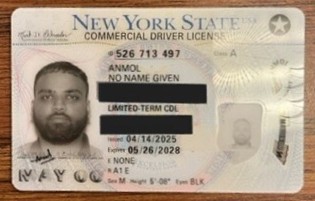The Real Meaning of the Establishment Clause
By Steve Byas
Setting aside the issue that the First Amendment restricted the federal government and not the states – which the U.S. Supreme Court later applied to the states through the “Incorporation Doctrine” interpretation of the 14th Amendment – the latest ruling on the Catholic Charter school, St. Isidore of Seville, by our Oklahoma Supreme Court is yet another example of a misunderstanding of the purpose of the First Amendment, written by James Madison.In a late June decision, the Oklahoma Supreme Court declared public funding of a Catholic charter school to be unconstitutional. The case was brought by Attorney General Gentner Drummond, who called the ruling “a tremendous victory for religious liberty.” Drummond added, “The framers of the U.S. Constitution and those who drafted Oklahoma’s Constitution clearly understood how best to protect religious freedom: by preventing the State from sponsoring any religion at all.”
Actually, the decision is an assault upon religious liberty.
Drummond is correct in saying the purpose of the First Amendment was to protect religious liberty, but he was wrong in saying, in effect, that religiously-based institutions should have less opportunity to contract with the state to perform certain activities than non-religious institutions.
No doubt the majority of our Oklahoma Supreme Court judges have had it drilled into their heads that the Establishment Clause of the First Amendment states that no tax dollars can be spent on any religious activities. But that is wrong. The Establishment Clause forbade Congress from creating an official religion, or Established Church. Why? Because an official religion could lead to some of the historical abuses that drove many to America to begin with.
We know about Catholic monarch “Bloody Mary,” who burned hundreds of Protestants at the stake for exercising a non-Catholic Christian faith. We know about individuals like John Calvin, who ruled Geneva, Switzerland with an iron hand and supported the execution of those who differed with him on doctrine.
When the Baptists in the Danbury Baptist Association of Connecticut wrote President Thomas Jefferson, concerned about a rumor they had heard that Congress was going to make the Congregational Church the Established religion of the United States, they were understandably alarmed. After all, their theological ancestors, the Anabaptists, had been systematically tortured, persecuted, and executed by both Catholics and Protestants for simply rejecting infant baptism. The Congregationalists in New England had boarded up church buildings that were Baptist and had publicly whipped Baptist preachers.
I strongly oppose those who would establish their religion and prohibit the free exercise of religion that our Founders opposed. But granting a charter to a Catholic-based school does not do that. Letting parents who wish to do so send their children to a religiously-based school in no way violates my right to practice my own religion.
Jefferson, who had co-authored the disestablishment of the Church of England in Virginia, along with Madison, wrote them back, assuring them that they had no true concern. The First Amendment, Jefferson explained, had “erected a wall of separation between church and state.” Rather than the modern interpretation that “separation of church and state” meant that individuals can not practice their religion in public, Jefferson said that the purpose was to keep the government out of the affairs of the church – and individual religious practice.
After finishing the letter, Jefferson rode in a carriage up Pennsylvania Avenue to the Capitol to attend church services. At the time, there were few public buildings in the District of Columbia, and churches held services inside the Capitol. No doubt today our state’s Supreme Court judges who issued this decision and our attorney general would be aghast at allowing a church to conduct services inside our own Capitol at 23rd and Lincoln in Oklahoma City.
Those who agree with Attorney General Drummond that spending tax dollars on anything that might promote a “sectarian” viewpoint are rather selective in their outrage. I recently visited the First American Museum in Oklahoma City (which was partly funded by my tax dollars), and I was disappointed to see one exhibit that decried the introduction of “European religions” into America. Those “European religions” were the various denominations of Christianity. In other words, it is fine to use tax dollars to attack the Christian faith, of whatever form. It is also ignorance – Christianity originated not in Europe, but in the Middle East.
What we have here is a policy question. Is granting a charter to St. Isidore to provide schooling good public policy? Perhaps, perhaps not. But this is something for the Oklahoma Legislature to decide. But once charter schools were created, it seems to me that denying a charter to a school simply because it is Christian is rather discriminatory in an irrational way.
With this decision, tax dollars will continue to flow into school districts in which students are taught things like American Indians were living in peace and harmony until Europeans introduced Christianity, and that the biblical account of creation is wrong. But Drummond, the Supreme Court, the American Civil Liberties Union, and the like have had nothing to say about that.
Steve Byas is Editor of the Oklahoma Constitution and author of several magazine articles and books, including History’s Greatest Libels. He may be contacted at byassteve@yahoo.com









Latest Commentary
Thursday 30th of October 2025
Thursday 30th of October 2025
Thursday 30th of October 2025
Thursday 30th of October 2025
Thursday 30th of October 2025
Thursday 30th of October 2025
Thursday 30th of October 2025
Thursday 30th of October 2025
Thursday 30th of October 2025